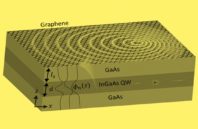A new way of enhancing the interactions between light and matter, developed by researchers at MIT and Israel’s Technion, could someday lead to more efficient solar cells that collect a wider range of light wavelengths, and new kinds of lasers and light-emitting diodes (LEDs) that could have fully tunable color emissions.
The fundamental principle behind the new approach is a way to get the momentum of light particles, called photons, to more closely match that of electrons, which is normally many orders of magnitude greater. Because of the huge disparity in momentum, these particles usually interact very weakly; bringing their momenta closer together enables much greater control over their interactions, which could enable new kinds of basic research on these processes as well as a host of new applications, the researchers say.

 (585) 768-2513
(585) 768-2513

